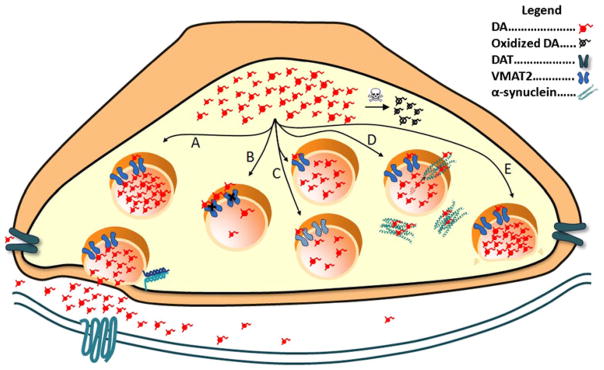Fig. 1.

Mechanisms of vesicular disruption in Parkinson’s disease. After synthesis, dopamine is transported into vesicles. Cytoplasmic dopamine can be oxidized; in excess, this can lead to cellular injury. a, Vesicles in the readily releasable pool dock at the presynaptic membrane. In response to an action potential and calcium influx, vesicle membranes fuse to the plasma membrane and release their contents into the synaptic space. Dopamine is then reclaimed by the dopamine transporter (DAT) and then subsequently repackaged into the vesicle. b, Pharmacological inhibition of VMAT2 prevents uptake of dopamine leading to a depleted vesicle and reduced release. c, Genetic reduction of VMAT2 expression via promoter polymorphisms in humans or genetic manipulation in mice (upper vesicle) or VMAT2 function as noted in [126•] (lower vesicle) causes a reduction in vesicular filling and subsequent release. d, α-synuclein can form pores in the vesicle and cause depletion of dopamine from the vesicle or interact with cytoplasmic dopamine to form toxic species. e, Altered trafficking of the vesicle to the presynaptic membrane has been proposed to occur in the presence of overabundant α-synuclein or mutated LRRK2
